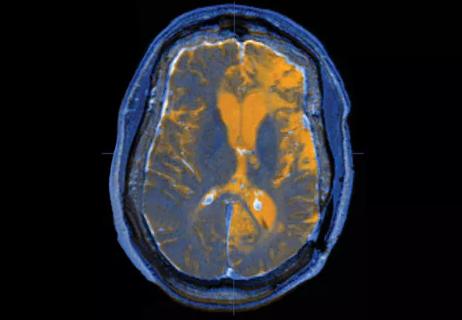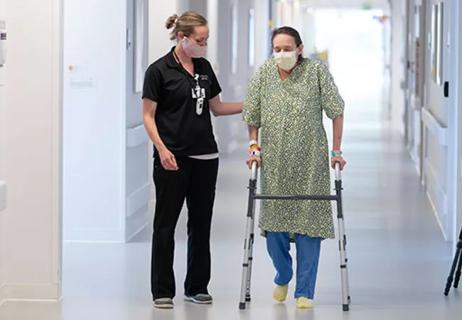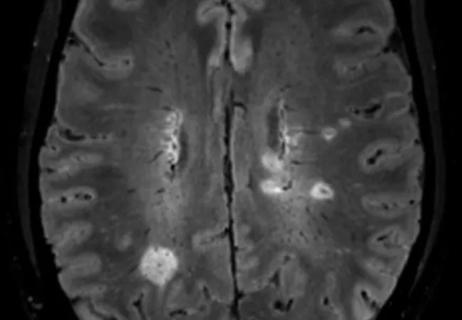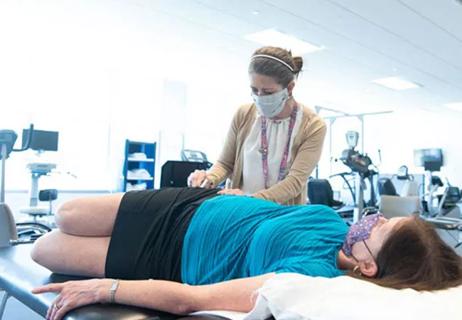Tips on implementing work flows and other tools for value-based care

By Irene Katzan, MD, MS, and Nancy Papesh, RN, MBA
Advertisement
Cleveland Clinic is a non-profit academic medical center. Advertising on our site helps support our mission. We do not endorse non-Cleveland Clinic products or services. Policy
Over the past four years, Cleveland Clinic has put great effort into developing condition-specific care paths for each of the health system’s clinical institutes. The initiative emphasizes value-oriented care through the use of process-based tools to operationalize evidence-based practice guidelines and guide clinical work flow. The Neurological Institute has led the charge, with more than two dozen care paths completed or under development as of the end of 2014.
By design, the care paths align with national initiatives centered on value-based care and reimbursement, patient satisfaction, and leveraging healthcare IT to measure patient-centered outcomes and drive quality. As providers and payers place ever more emphasis on these factors, we share here some lessons learned from development of the Neurological Institute’s care paths to date.

The timeline from conceptualizing a care path to implementing it within the electronic medical record (EMR), if appropriate, stretches over about 18 months. The process involves:
As of late 2014, three Neurological Institute care paths — for spine care, stroke and concussion — had reached the EMR integration stage.
Advertisement
We sometimes compare the creation of care paths, and their related guides and algorithms, to switching on a light in a dark room. If the care path ends up being electronically implemented as well, the brightness in the room can be particularly illuminating. Below are eight topically grouped insights that have come to light as the Neurological Institute has developed and implemented its care paths thus far.
Care path guides have proved to be game-changers in reducing variability of care and unnecessary cost. The guides serve as critical, consensus-based road maps. Together with related algorithms and work flows, the guides are “exportable” across all Cleveland Clinic practice settings — and potentially to other health systems in the future. They are adaptable enough to be integrated into any institution’s EMR system and can even be used as a nonelectronic clinical tool.
We’ve learned that:
1) Care path guides are not to be applied generically. Care path guides are essential to create a standardized system of care that emphasizes algorithms that everyone agrees are important, but care still must be individualized. “Cookie-cutter care” is not part of the equation.
2) “Usual suspects” emerge — and need to be addressed. Regardless of the disease, improving value often involves similar themes. These include overprescribing (and sometimes underuse) of therapies, medications or imaging. We are finding better ways to integrate the concept that “less care is sometimes better care” into our work flows while always following the principle that appropriate care must never be reduced.
Advertisement
3) Ownership among all stakeholders is key. Development of care path guides must be driven by those who will use them. It involves unified input and buy-in from all key stakeholders and specialists across relevant disciplines. Stakeholders are kept current on pilot testing and updates to the guides. This approach tends to produce a sense of ownership and support that will drive successful implementation following care path rollout.
Care paths undergo pilot testing, typically at Cleveland Clinic community hospitals, to ensure that they are achieving their goals of improving consistency with evidence-based practice and avoiding unnecessary costs.
We’ve learned that:
4) Pilot testing provides proof of concept and allows fine-tuning before implementation. A pilot study of the Headache Care Path in the emergency department of one community hospital achieved a 75 percent reduction in opioid prescribing. In pilot testing of the Spine Care Path, opioid prescriptions and premature imaging were both reduced by about 50 percent. Other pilot tests have flagged algorithms or processes that needed refining, prompting changes before full care path rollout.
5) Initial pilot data demonstrate cost reductions. Our pilots have shown that in the acute phase of care, consistent use of a care path can reduce costs by up to 50 percent. Future efforts will aim to determine whether such cost reductions are maintained over time without reductions in care quality.
When a care path is integrated into the EMR work flow, data are collected to (1) carry out ongoing analysis; (2) generate condition-specific metrics for individual physicians, departments and facilities; and (3) drive continuous quality improvement. Care path tools tied to the EMR include standardized documentation templates, order sets, and clinical decision-support and predictive analytic tools.
Advertisement
We’ve learned that:
6) We must choose which care paths to prioritize for full EMR integration. Not all care paths require full EMR integration. Those that span several subspecialties with a focus on multidisciplinary care (e.g., the Stroke Care Path) are the best candidates, to help support coordinated and consistent delivery of especially complex care. In contrast, other care paths may serve chiefly to guide primary care referral to a specific type of specialist for a given condition, which typically doesn’t require EMR integration. Prioritizing care paths for EMR integration promotes the best use of resources to maximize impact on patient outcomes and the value of care delivered.
7) Patient “red flags” should be considered in EMR algorithms. For example, in the Spine Care Path, 12 red-flag questions are included to detect the potential for serious underlying causes of back pain that may require earlier imaging or other testing than is generally recommended.
8) Measuring patient-reported outcomes (PROs) is essential. PRO tracking is critical to patient-centered care. Traditional collection of only objective outcomes — such as the number of seizures a patient on antiepileptic medication is having — does not serve patients well enough. Value-oriented care requires capturing outcomes on functional and quality-of-life measures too, such as whether the medication makes a patient sleepy or dizzy. PRO tracking — which Cleveland Clinic achieves via its Knowledge Program© data collection system — goes beyond traditional end points to regularly assess how patients are faring on measures they deem important so we can better guide their care.
Advertisement
As the Neurological Institute develops care paths for additional disease states, we are continuously refining existing care paths, as follows:
Stay tuned. The value-based future of medicine is here, and care paths will play a pivotal role.
Dr. Katzan, a cerebrovascular specialist, is Director of the Neurological Institute’s Center for Outcomes Research and Evaluation.
Ms. Papesh is Administrative Director, Clinical Integration, for the Neurological Institute.
Advertisement

Q&A with Brain Trauma Foundation guideline architect Gregory Hawryluk, MD, PhD

Q&A with newly arrived autoimmune neurology specialist Amy Kunchok, MD

A neurocritical care specialist shares what’s spurring growth of this new evaluation approach

Focused ultrasound offers a newer alternative to deep brain stimulation

Prehabilitation can help improve outcomes after spine surgery

Get ready for central vein sign and optical coherence tomography

How these new drugs fit into practice two years out from their first approvals

A conversation on the state of physiatry with the AAPM&R’s Vice President